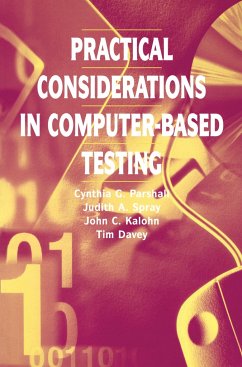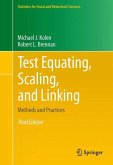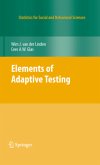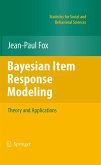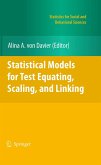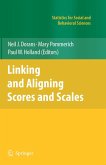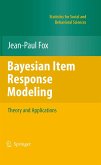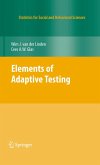This book emphasizes the practical side of computer-based testing and presents suggestions, information, and ideas for its actual implementation. Most current references on computer-based testing either cover the topics from a theoretical point of view or present numerous examples of different and often disparate topics that have been assessed using computer-based testing methods.This book is different. It assumes that the reader may have little or no experience in actually implementing a computer-based testing program, even if knowledgeable about the psychometrics and measurement principles that govern it. It provides guidance and information that can be used to make wise, informed decisions, including the type of computer-based test that should be administered, possible cost to examinees, examinee reactions to the test, scoring issues, computer mode effects, the development of innovative item types, the time and cost needed to create and maintain an item pool, and many more.
This book introduces computer-based testing, addressing both nontechnical and technical considerations. The material is oriented toward practitioners and graduate students. The practical emphasis will be useful to measurement professionals who are or will be responsible for implementing a computerized testing program. The instructional information is also designed to be suitable for a one-semester graduate course in computerized testing in an educational measurement or quantitative methods program. While certain theoretical concepts are addressed, the focus of the book is on the applied nature of computerized testing. For this reason, the materials include such features as example applications, figures, and plots to illustrate critical points in the discussions. A wide range ofnontechnical issues need to be considered in implementing a computer-based testing program. Separate chapters are provided on test administration and development issues, examinee issues, software issues, and innovative item types. Test administration and delivery issues include the location of exam administration, selection of hardware and software, security considerations, scheduling of administration frequency and time limits, cost implications, and program support as well as approaches for addressing reliability, validity, comparability, and data analysis. Examinee issues include the influence ofexaminees' reactions to adaptive testing, the effect ofcomputer based task constraints, and the impact of examinees' prior computer experience. Software issues include usability studies and software evaluation as tools in selecting and developing appropriate software, based on the test program needs.
This book introduces computer-based testing, addressing both nontechnical and technical considerations. The material is oriented toward practitioners and graduate students. The practical emphasis will be useful to measurement professionals who are or will be responsible for implementing a computerized testing program. The instructional information is also designed to be suitable for a one-semester graduate course in computerized testing in an educational measurement or quantitative methods program. While certain theoretical concepts are addressed, the focus of the book is on the applied nature of computerized testing. For this reason, the materials include such features as example applications, figures, and plots to illustrate critical points in the discussions. A wide range ofnontechnical issues need to be considered in implementing a computer-based testing program. Separate chapters are provided on test administration and development issues, examinee issues, software issues, and innovative item types. Test administration and delivery issues include the location of exam administration, selection of hardware and software, security considerations, scheduling of administration frequency and time limits, cost implications, and program support as well as approaches for addressing reliability, validity, comparability, and data analysis. Examinee issues include the influence ofexaminees' reactions to adaptive testing, the effect ofcomputer based task constraints, and the impact of examinees' prior computer experience. Software issues include usability studies and software evaluation as tools in selecting and developing appropriate software, based on the test program needs.
From the reviews of the first edition:
JOURNAL OF THE AMERICAN STATISTICAL ASSOCIATION
"This very useful book may represent the first effort to pull together the extremely broad areas of research involved in computerized testing and present them in one readable, organized, and applied package...reads very smoothly and presents even difficult material in such a way that someone without a firm grounding in psychometrics can follow the logic of computerized test development. The writing is extremely concise, the material is presented in a logical order, and ample references are provided to support the information given in each chapter...a wonderful resource for any test administrator or test designer who is familiar with the procedure for producing paper-and-pencil tests but who is unsure about how to smooth the transition to a computerized test. The authors do a great service by balancing the instructional information with many warnings about the unexpected psychometric and practical pitfalls of a computerized testing program...It is refreshing to see this material presented in a way that conveys neither overenthusiastic optimism nor dire pessimism...helpful for those who are looking for an introductory guidebook that exposes some of the practical advantages of computerized tests."
"This book is devoted to computer-based testing with emphasis on its practical side. It includes both technical and nontechnical considerations. Material is oriented towards practitioners and graduate students. ... The book can be useful for practitioners and students involved into preparation and evaluation of computer-based testing." (Marie Huskova, Zentralblatt MATH, Vol. 1014, 2003)
JOURNAL OF THE AMERICAN STATISTICAL ASSOCIATION
"This very useful book may represent the first effort to pull together the extremely broad areas of research involved in computerized testing and present them in one readable, organized, and applied package...reads very smoothly and presents even difficult material in such a way that someone without a firm grounding in psychometrics can follow the logic of computerized test development. The writing is extremely concise, the material is presented in a logical order, and ample references are provided to support the information given in each chapter...a wonderful resource for any test administrator or test designer who is familiar with the procedure for producing paper-and-pencil tests but who is unsure about how to smooth the transition to a computerized test. The authors do a great service by balancing the instructional information with many warnings about the unexpected psychometric and practical pitfalls of a computerized testing program...It is refreshing to see this material presented in a way that conveys neither overenthusiastic optimism nor dire pessimism...helpful for those who are looking for an introductory guidebook that exposes some of the practical advantages of computerized tests."
"This book is devoted to computer-based testing with emphasis on its practical side. It includes both technical and nontechnical considerations. Material is oriented towards practitioners and graduate students. ... The book can be useful for practitioners and students involved into preparation and evaluation of computer-based testing." (Marie Huskova, Zentralblatt MATH, Vol. 1014, 2003)

